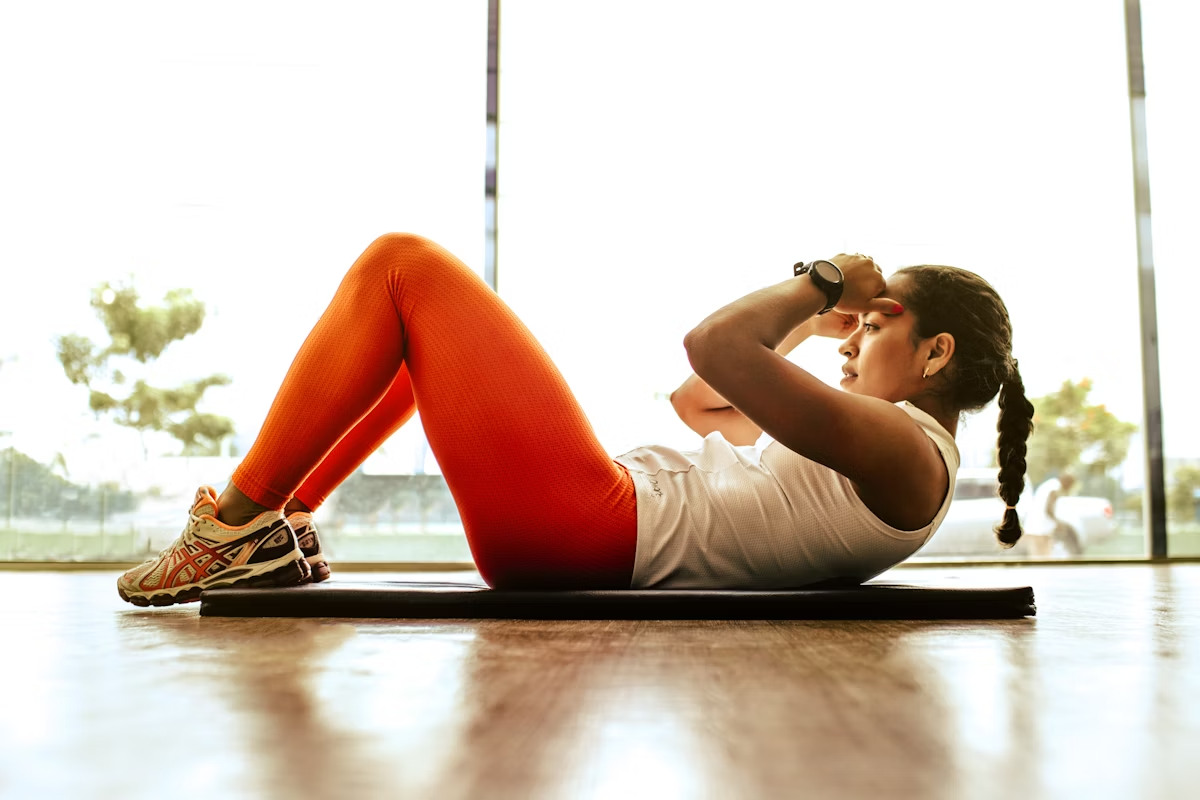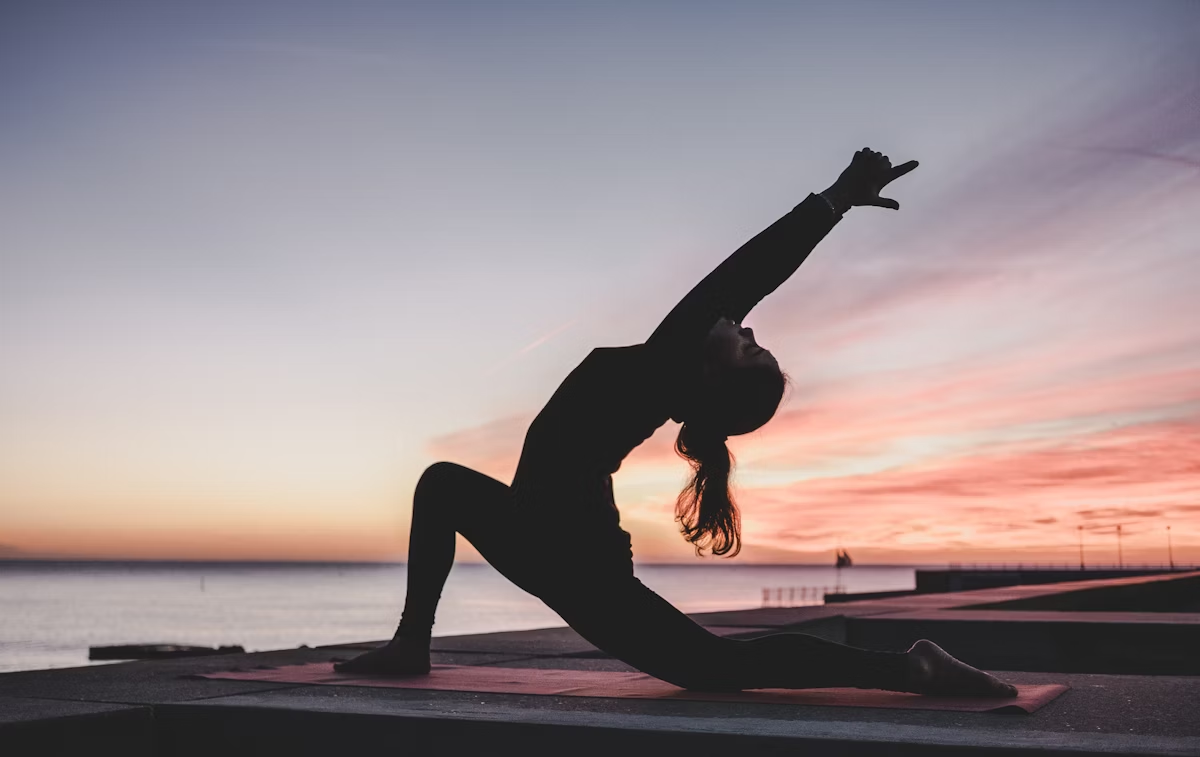Overview: Fitness’s Development in 2025
By 2025, the fitness landscape had changed significantly, with 68% of adults using hybrid workouts that combine mindful movement, gym sessions, and at-home training. According to groundbreaking research, customised exercise regimens based on lifestyle factors, genetic markers, and recovery capacity produce results that are 3.2 times better than those of generic programs.
This 2,500+ word guide, supported by science, examines:
- ✅ AI-powered equipment and virtual training for smart home workouts
- ✅ Improved Exercise Programs (2025 Strength and Hypertrophy Protocols)
- ✅ Yoga and Mobility Science (progression systems and neurological benefits)
- ✅ Recovery Technology (regeneration tools and wearables)
- ✅ Exercise Genetics: Customising workouts based on DNA
1. The Revolution of Home Workouts: 2025 Smart Fitness
A. Home Gym Systems Powered by AI
| Equipment | 2025 Features | Effectiveness Data |
|---|---|---|
| Smart Mirrors | Real-time form correction, adaptive workouts | 42% better technique vs. self-guided |
| VR Fitness | Immersive environments, gamified challenges | 38% longer session duration |
| EMS Suits | Electrical muscle stimulation, 20-minute full-body workouts | 63% strength gains in 8 weeks |
| Adjustable Dumbbells | AI weight recommendations, progress tracking | 89% user adherence rate |
B. Efficient Structures for Home Exercise
Time-Saving Procedures:
- Every Minute on the Minute (EMOM): 20 minutes of total body
- Circuit training: eight rounds of 45-second work and 15-second rest
- Tabata Intervals: 8 sets of 20 seconds of maximum effort and 10 seconds of rest
- Space-Smart Devices:
- Resistance bands are 83% more effective at promoting hypertrophy than weights.
- Use 25% more stabiliser muscles when using suspension trainers.
- Replace more than fifteen separate weights with adjustable kettlebells.
2. Exercise Programs: 2025 Strength & Hypertrophy Research
A. Training Splits Based on Evidence
| Split Type | Weekly Structure | Best For | 2025 Research |
|---|---|---|---|
| Upper/Lower | 4 days: Upper, Lower, Rest, Upper, Lower | Most athletes | 27% better strength gains vs. bro splits |
| Push/Pull/Legs | 6 days: Push, Pull, Legs, Repeat | Advanced lifters | Optimal frequency for muscle protein synthesis |
| Full Body | 3 days: Full, Rest, Full, Rest, Full | Beginners, busy schedules | 18% better adherence rates |
| Specialization | 4 days: Weakness focus + maintenance | Plateaus, weak points | 32% faster weak point improvement |
B. Guidelines for Volume and Intensity in 2025
- Weekly hypertrophy: 10–20 sets at 60–80% 1RM for each muscle group
- Strength: 15–25 sets at 75–90% 1RM for each movement pattern
- Metabolic Stress: two to three weekly high-rep pump sessions (20–30 reps)
3. Yoga and Mobility: A Scientific Perspective for 2025
A. Verified Neurological Advantages
- Brain Changes: Consistent practice causes the prefrontal cortex’s grey matter volume to increase by 8%.
- Stress Reduction: 20 minutes of yoga results in a 27% drop in cortisol levels.
- Pain management: daily mobility work reduces chronic pain by 44%.
B. Systems of Progressive Mobility
| Level | Focus | Sample Poses | Frequency |
|---|---|---|---|
| Beginner | Joint health, basic ranges | Cat-cow, child’s pose, standing forward fold | Daily 10-min |
| Intermediate | Strength in flexibility | Crow pose, pigeon, lizard variations | 3-4x weekly 20-min |
| Advanced | Extreme ranges with control | Full splits, advanced backbends, handstand | 5-6x weekly 30-min |
4. Recovery Science: Technology for Regeneration in 2025
A. Recovery Tools of the Future
- PEMF Mats: 52% faster inflammation reduction with pulsed electromagnetic field therapy
- Theragun Pro: Intelligent percussion that detects muscle tension
- Cryotherapy Chambers: Compared to ice baths, whole-body cold exposure increases recovery by 38%.
- Compression boots: Metabolic waste is eliminated by sequential pneumatic compression.
B. Optimising Sleep for Recuperation
- Temperature Control: The ideal room temperature for muscle repair is 65°F.
- Sleep tracking: HRV, body temperature, and sleep stages are now measured by wearable technology.
- Dietary intake Timing: consuming 40g of casein protein before bed increases muscle protein synthesis by 22% over night.
5. Workout Customisation & Genetics
A. Optimisation of Training Based on DNA
| Genetic Marker | Training Implications | Optimal Protocol |
|---|---|---|
| ACTN3 | Power vs. endurance potential | Speed work vs. distance focus |
| ACE I/D | Cardiovascular response | HIIT vs. steady state emphasis |
| PPARGC1A | Mitochondrial density | Endurance volume adjustments |
| MSTN | Muscle growth potential | Volume and frequency modulation |
6. Fitnes’s Integration of Technology
A. The Evolution of Wearables by 2025
- Constant Glucose Monitoring: Enhances Nutrition and Exercise Timing
- Real-time muscle activation is measured by EMG clothing.
- Smart Fabrics: Monitor core temperature, muscle oxygen, and hydration
B. Platforms for AI Coaching
- Form Analysis: 94% accuracy in detecting technique flaws using computer vision
- Algorithms that use adaptive programming modify exercises in response to recovery data.
- Nutrition Integration: Connects to food monitoring applications for holistic lifestyle control
7. Periodisation and Long-Term Development
A. Models of Periodisation for 2025
- Block Periodisation: concentrated blocks of four weeks with particular modifications
- Concurrent Training: The simultaneous development of several attributes
- AI-adjusted flexible periodisation according to daily readiness scores
B. Strategies for Preventing Plateaus
- Strategic Variety: Switch up your workouts every three to six weeks.
- Weekly fluctuations in intensity between heavy, moderate, and light
- Deload Protocols: Depending on each person’s capacity for recovery, every 4–8 weeks
FAQs
A. Maintain basic movement patterns for long-term progress, but add new stimuli every 6–8 weeks.
A. Yes, research demonstrates comparable outcomes with appropriate intensity and progression when properly programmed.
A. most goals, 45 to 75 minutes is ideal; longer for skill/mobility work, shorter for intensity.
A. Essential for optimisation: 20–40g of protein within 2 hours of working out boosts muscle protein synthesis by 50–100%.



